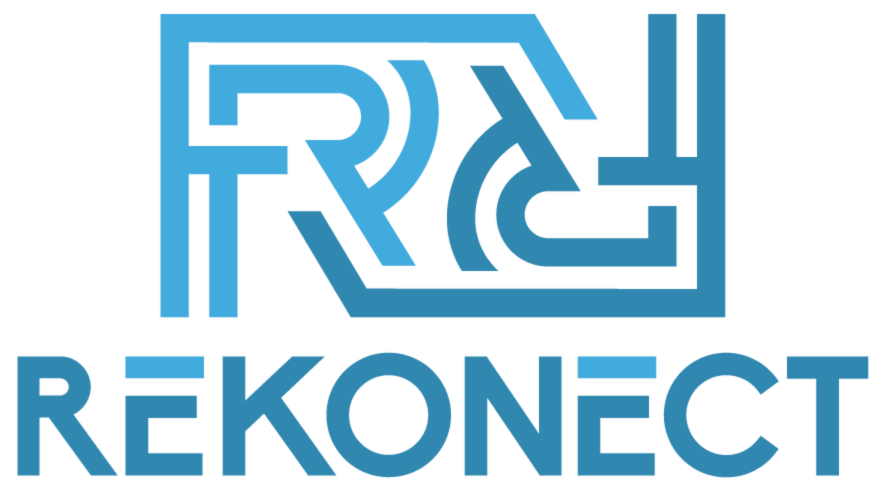As the calendar flips to a new year, nonprofit founders have an excellent opportunity to take stock of their organization’s achievements and lay the groundwork for even greater impact. Every new year brings a fresh burst of energy, a renewed sense of purpose, and the inspiration to set ambitious yet attainable goals. For nonprofit leaders, that can mean clarifying your organization’s mission, strengthening your team, and sharpening your fundraising strategies—all while staying compliant with industry regulations.
Below, we’ll explore five actionable New Year’s resolutions that can propel your nonprofit to new heights. This post is organized according to the following outline:
- Focus on Your Mission
- Improve Fundraising Strategies
- Strengthen Governance
- Use Available Resources
- Prioritize Compliance
In each section, we’ll share ideas, tips, and relevant resources, including those available through Rekonect, that can empower you to achieve your goals. By adopting these resolutions, you’ll be better prepared to navigate challenges, attract donors, engage stakeholders, and ultimately make a meaningful difference.
1. Focus on Your Mission
Your mission statement is the cornerstone of your organization’s identity. It articulates why you exist, the people you serve, and the change you aim to create in the world. As you enter the new year, revisit this foundational statement to ensure it still captures the essence of your work and resonates with your community.
- Gather Stakeholder Feedback: Talk to your board members, staff, volunteers, and beneficiaries to get a holistic perspective. Consider sending out a quick survey or holding a virtual town hall to solicit ideas. You might find that some language no longer resonates or that the scope of your mission has shifted slightly over time.
- Benchmark Against Industry Standards: Compare your mission statement with those of similar nonprofits to see how they communicate their purpose. This can spark ideas for making your own statement clearer and more compelling.
- Reflect Organizational Growth: Has your organization expanded its programs or refined its approach? Update the mission statement to capture these changes, ensuring it remains both accurate and inspiring.
Why Your Mission Matters
A clear, concise mission statement shapes your nonprofit’s strategic planning, informs your marketing, and sets the tone for all organizational efforts. It reminds your team why they’re investing time and energy, and it helps external stakeholders understand your unique role in the sector. Aligning everyone around a shared vision is critical for long-term success.
Additional Resource
The National Council of Nonprofits offers valuable guidance on formulating and refining nonprofit mission statements. You’ll find best practices and examples that can help you either revise your current statement or craft a new one if you’re just starting out.
2. Improve Fundraising Strategies
Fundraising is the lifeblood of any nonprofit, making it critical to continually test new strategies and expand existing ones. Whether you rely on individual giving, grants, or corporate sponsorships, an adaptive approach can help you build more sustainable revenue streams.
- Digital Fundraising Campaigns: Leverage social media and email marketing to reach potential donors where they already spend time. When you create a compelling story around the impact you seek to achieve, people are more likely to contribute. Platforms like Facebook Fundraisers and Instagram donation stickers can drive micro-donations that add up quickly.
- Peer-to-Peer Fundraising: Encourage your strongest supporters to champion your cause among their own networks. Peer-to-peer fundraising not only brings in donations but also introduces your organization to new audiences who might become future volunteers, partners, or long-term donors.
- Virtual and Hybrid Events: From online galas to hybrid walkathons, blending virtual participation with in-person gatherings can expand your reach and lower overhead costs. An engaging, interactive event—particularly one that offers exclusive experiences or insights—can attract a broad donor base.
Diversify and Innovate
Diversifying your funding sources can protect your organization from unexpected financial hits. A mix of grants, corporate sponsorships, and individual donations ensures that you’re not overly dependent on a single channel. Additionally, innovative strategies like cryptocurrency donations or impact investing (if it aligns with your mission and capacity) can position your nonprofit at the cutting edge of philanthropy.
Additional Resource
Nonprofit Hub provides free articles, webinars, and guides on fundraising trends. It’s a fantastic resource for discovering new strategies and staying informed about the latest developments in donor engagement.
3. Strengthen Governance
A strong board of directors is essential for a nonprofit’s sustainability and impact. The board not only offers strategic guidance but also serves as a critical fundraising, networking, and oversight body. This year, make it a priority to ensure your board members are engaged, informed, and aligned with your mission.
- Evaluate Skill Sets: Conduct a gap analysis to identify missing competencies on your board. You may realize you need expertise in areas like finance, technology, or marketing. Diversifying the board’s skill set brings new perspectives and can significantly improve decision-making.
- Enhance Onboarding and Training: Once you’ve found the right people, invest in onboarding to familiarize them with your mission, values, and programs. Offer ongoing training opportunities, such as workshops, webinars, and conferences, to help board members remain effective in their roles.
- Set Clear Expectations: Define specific roles, responsibilities, and term lengths. Clear documentation fosters accountability, and board members who know what is expected of them are more likely to stay committed. Periodic evaluations can also help assess performance and identify areas for improvement.
Cultivating a Culture of Transparency
Strong governance depends on clear communication between leadership and the board. Regularly share financial reports, strategic plans, and major decisions. Transparency fosters trust and accountability, both internally and externally. That level of openness reassures donors, partners, and the public that your nonprofit operates responsibly.
Additional Resource
BoardSource is a widely recognized resource offering research, leadership programs, and tools specifically designed to strengthen nonprofit board governance. Their insights can guide you as you refine your board structure, recruit new members, and improve internal processes.
4. Use Available Resources
Running a nonprofit can be complex—juggling funding, programs, compliance, and volunteer coordination all at once. This is where resource directories can be a game-changer, providing centralized access to tools, best practices, and professional support. One such option is the Rekonect Resource Directory, a comprehensive hub aimed at simplifying nonprofit operations.
- Streamline Administrative Tasks: The directory features vetted vendors and services, helping you quickly find reliable options for tasks like accounting, legal counsel, marketing, and more. This reduces the time you spend vetting providers, so you can focus on mission-critical work.
- Stay Updated on Industry Trends: Access knowledge bases, webinars, and articles to stay in the loop about the latest in nonprofit governance, funding opportunities, and compliance regulations.
- Expand Your Network: By plugging into Rekonect’s community, you can connect with fellow nonprofit leaders, share insights, and build long-lasting partnerships. Collaboration often sparks creativity, whether it’s co-hosting fundraising events or advocating for shared policy goals.
Building a Supportive Ecosystem
No organization stands alone, especially in the nonprofit sector. By tapping into resources like Rekonect’s directory, you can cultivate a robust support system that elevates every facet of your work. From discovering innovative fundraising methods to receiving expert advice on governance, leveraging such resources can be a turning point in the growth of your nonprofit.
Additional Resource
In addition to Rekonect, consider exploring GuideStar for data on other nonprofits, grantmakers, and partner organizations. Understanding how peers operate and where gaps exist can inform your own strategies and help you collaborate more effectively.
5. Prioritize Compliance
Nonprofit compliance is an ongoing responsibility. Properly filing annual reports, adhering to state-specific regulations, and maintaining your organization’s tax-exempt status are foundational tasks that cannot be overlooked. Failure to meet these obligations can lead to fines, reputational damage, or even the loss of your nonprofit status.
- Create a Compliance Calendar: Map out all the annual, quarterly, and monthly deadlines required by your local and federal government. Include tasks like tax filings, charitable solicitation renewals, and board meeting minutes. Setting reminders well in advance can save you from last-minute scrambles.
- Review Financial Management Practices: Confirm that you have the right checks and balances in place—regular audits, transparent budgeting, and careful tracking of restricted funds. This ensures you remain accountable to donors and regulators.
- Stay Informed: Laws and regulations affecting nonprofits can change. Allocate time each quarter to review policy updates or subscribe to newsletters from credible sources. That way, you’ll know immediately if new rules might affect your operations.
Cultivating Public Trust Through Transparency
Operating ethically and staying compliant aren’t just about meeting legal requirements; they’re also a public demonstration of your nonprofit’s integrity. Stakeholders want to see evidence that you handle funds responsibly and respect both local and national regulations. When donors trust that their contributions are being used effectively, they’re more inclined to give again and become advocates for your cause.
Additional Resource
The IRS website remains the go-to source for nonprofit tax-related information. It’s filled with guidelines, forms, and updates on regulations that apply to 501(c)(3) organizations and other nonprofit entities.
Conclusion
As you look ahead to the possibilities the new year offers, remember that each resolution you set can serve as a springboard for strengthening your nonprofit’s impact. Revisiting your mission statement ensures everyone is moving in the same direction, while refining your fundraising strategies secures the resources you need to achieve your goals. Bolstering board governance and tapping into available resources, such as the Rekonect Resource Directory, provide the structure and community support essential for sustainable growth. Finally, embracing compliance isn’t just about avoiding penalties—it’s a key component of public trust and long-term success.

